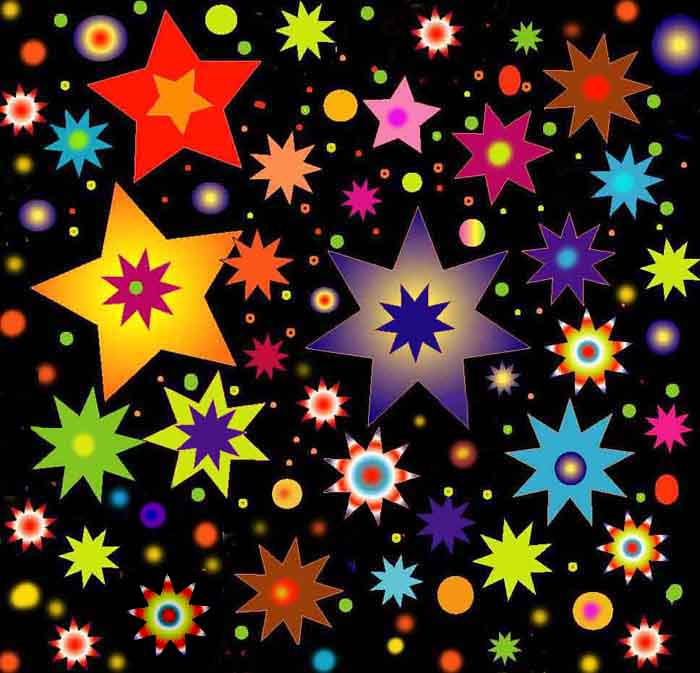
This is the modest telescope I constructed when I was 16, I learned the technique of grinding and polishing the parabolic mirror (7 inches in diameter). The young fellow is my grandson! To follow the movement of stars and planets the rotation of the equatorial mounting was controlled by an electric motor taken from an old phonograph. This motor was coupled to a tiny gear box from an instrument of a British Royal Air Force World War II plane.
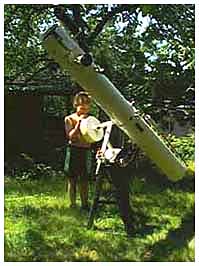
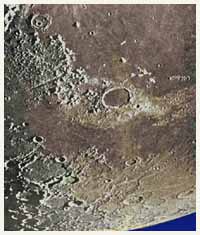
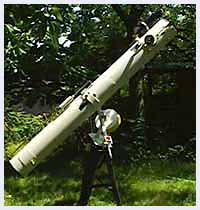
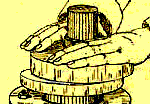
How to polish a telescope mirror! You need 2 disks of thick glass. Between the 2 glasses some coarse abrasive powder mixed with water is used to grind slowly both pieces by rubbing them together (see animation) while turning slowly around the stand. The light pressure of the hands automatically forces the upper part to be grinded faster in it's center and faster on the edge of the lower disk. When the proper shape is obtained thiner powders are used. After weeks of hard job an extremely fine iron oxide is used for the final polishing. Animation from a drawing of
Hans Rohr: "A telescope for everyone"
Photos from the Hubble Telescope. Click here to go to the Hubble site.
The following assembly was made from photos of this space telescope

Dan's Night Sky
